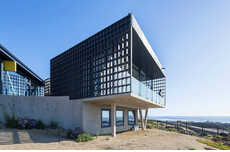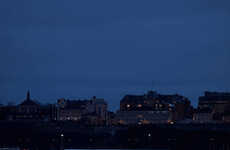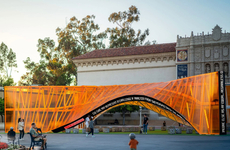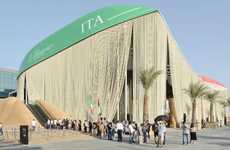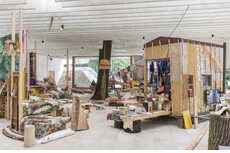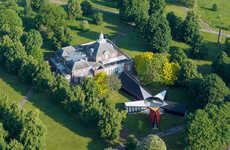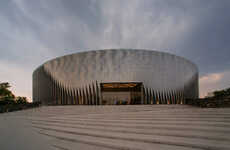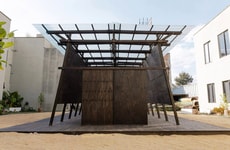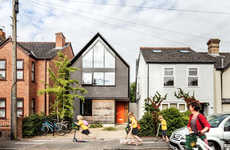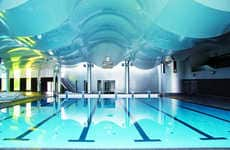
The Chilean Pavilion Reflects on the Country's History
Jamie Danielle Munro — June 13, 2014 — Art & Design
References: labiennale.org & designboom
The Chilean Pavilion is yet another design that's been presented at the Venice Biennale recently. This one focuses on the political history of the country through various forms of housing.
The entire room is lit with a red glow, which almost adds an eery and mystical sensation to the pavilion. On one wall there are numerous small housing replicas hanging from the side, and jutting outwards. Projected photos from Chile have been placed on a different wall, with a large concrete structure in the center of the room. This concrete section has a square hole in the middle so that people can view the projected photos as if looking through a picture frame, which is an interesting added touch to the pavilion.
Photo Credits: designboom, labiennale.org
The entire room is lit with a red glow, which almost adds an eery and mystical sensation to the pavilion. On one wall there are numerous small housing replicas hanging from the side, and jutting outwards. Projected photos from Chile have been placed on a different wall, with a large concrete structure in the center of the room. This concrete section has a square hole in the middle so that people can view the projected photos as if looking through a picture frame, which is an interesting added touch to the pavilion.
Photo Credits: designboom, labiennale.org
Trend Themes
1. Political History Reflection - Incorporating political history into design elements can create immersive and thought-provoking experiences.
2. Interactive Exhibits - Adding interactive elements like the square hole in the concrete structure can enhance visitor engagement and create a unique viewing experience.
3. Mystical Lighting - Using lighting techniques, such as a red glow, can create a captivating atmosphere and evoke emotional responses from visitors.
Industry Implications
1. Architecture - Architects can explore innovative ways to incorporate historical narratives into their designs, blurring the line between art and architecture.
2. Exhibition - Exhibition organizers can leverage interactive elements and creative lighting techniques to create memorable and engaging experiences for their visitors.
3. Art - Artists can utilize lighting as a tool to create an immersive and otherworldly ambiance in their installations, amplifying the emotional impact of their work.
0.4
Score
Popularity
Activity
Freshness


